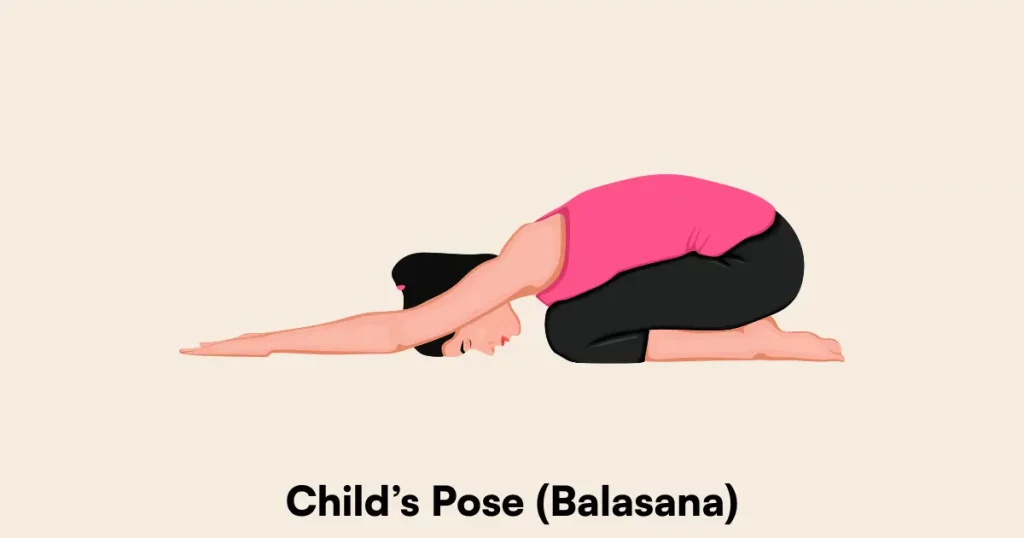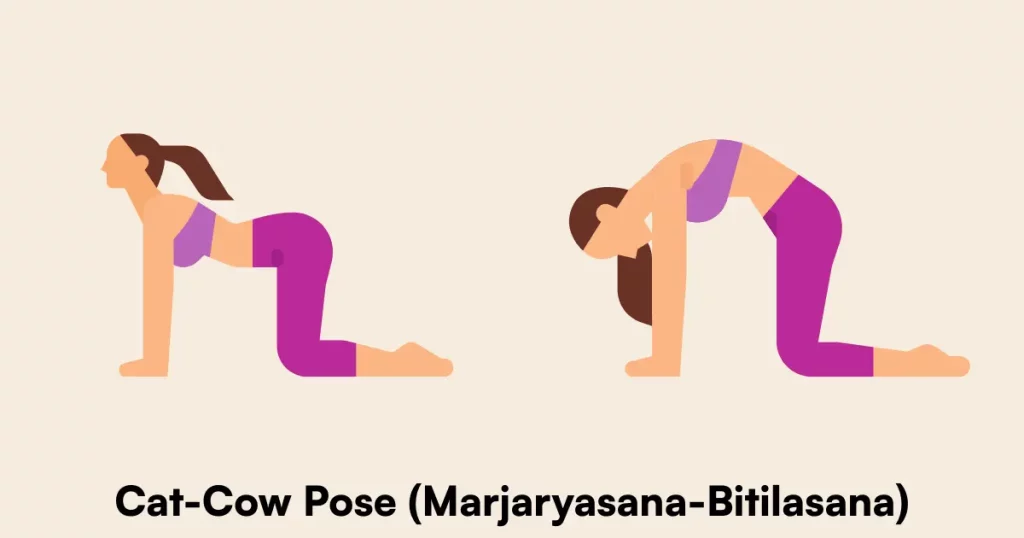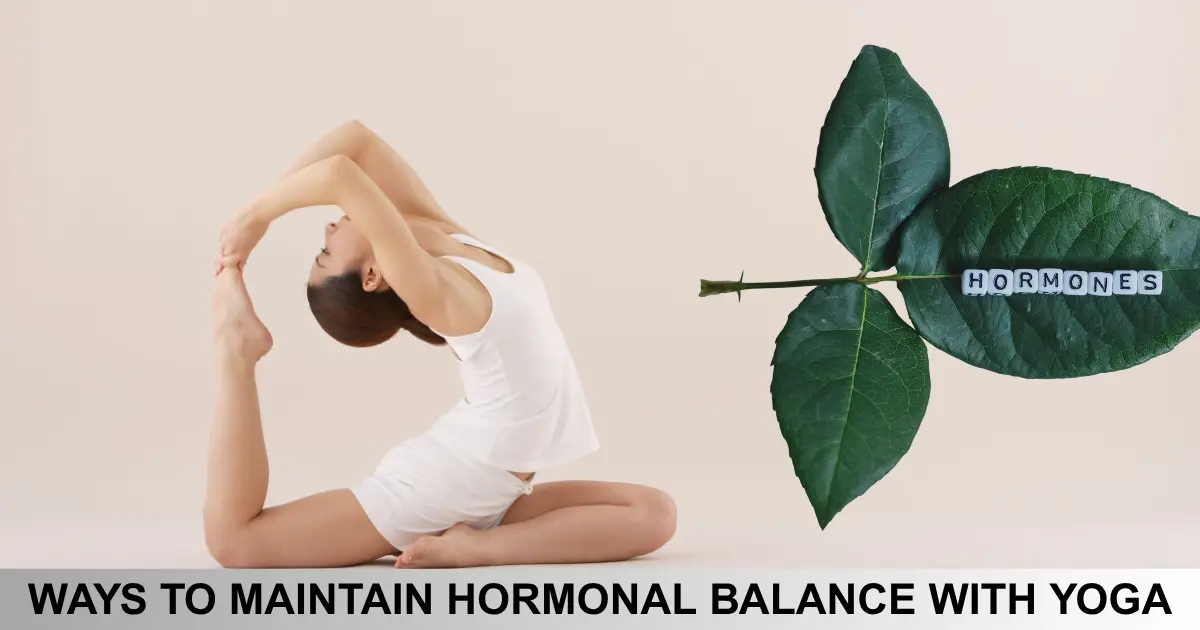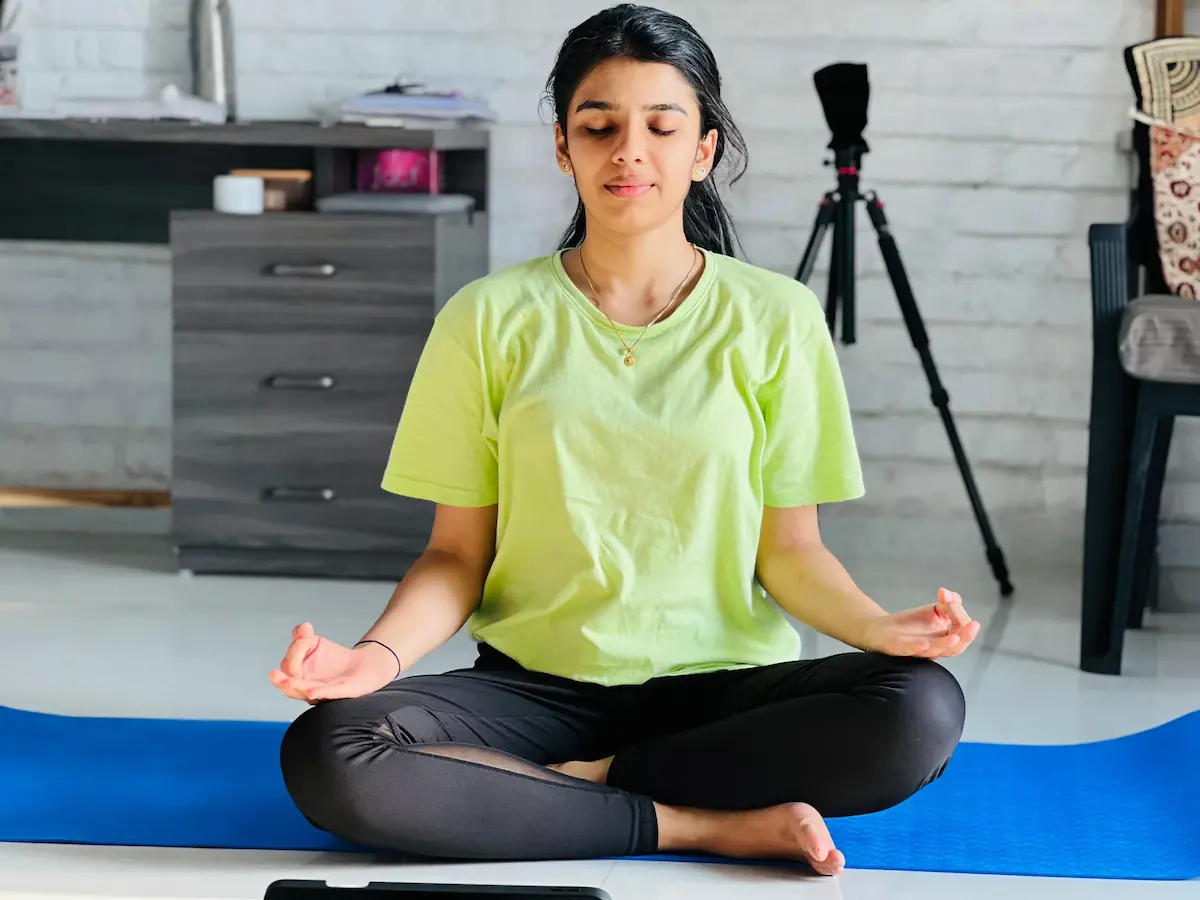Hormonal imbalance affects many aspects of physical and emotional well-being. Yoga, with its mindful movements and stress-reducing practices, is an effective natural tool for supporting hormonal harmony. Let’s explore how you can use yoga to balance your hormones and feel your best.
Why Yoga For Hormonal Balance?

- Balances the Endocrine System: Yoga stimulates glands that regulate hormones, like the thyroid and adrenal glands.
- Reduces Stress: Mindful practices including breathwork and meditation calm the nervous system, lowering stress hormones like cortisol.
- Eases Menstrual and Menopausal Symptoms: Certain poses relieve cramps, reduce bloating, and support a regular menstrual cycle or provide relief from perimenopausal discomforts.
- Improves Circulation: Yoga improves pelvic blood flow, supporting reproductive and metabolic health.
Step-by-Step Yoga Sequence for Hormonal Balance
Follow these steps daily or as needed for best results:
1. Begin With Mindful Breathing
- Practice: Deep diaphragmatic breathing for 2-3 minutes.
- Why: Calms stress reactions and sets the tone for your practice.
2. Warm Up the Body
Child’s Pose (Balasana)

- Sit on your heels and reach your arms forward, resting your forehead on the mat.
- Benefits: Calms the mind, relieves lower back and pelvic tension.
Cat-Cow Stretch (Marjaryasana-Bitilasana)

- Alternate between arching and rounding your back on your hands and knees.
- Benefits: Increases spinal flexibility and pelvic blood flow.
3. Core Yoga Poses for Hormonal Balance
- Cobra Pose (Bhujangasana): Lie on your stomach and lift your chest.
Stimulates adrenal glands and relieves back pain. - Bridge Pose (Setu Bandhasana): Lie on your back with feet hip-width apart, lift hips up.
Stimulates thyroid gland and aids hormonal regulation. - Seated Forward Bend (Paschimottanasana): Sit, reach for your toes, elongate the spine.
Soothes the nervous system and relieves abdominal tension. - Reclining Bound Angle (Supta Baddha Konasana): Lie back, bring soles of feet together.
Opens hips and pelvic muscles, promotes relaxation. - Legs Up the Wall (Viparita Karani): Lie with legs resting against a wall.
Reduces cramps, encourages circulation in lower body.
4. Twists and Restoratives
- Supine Spinal Twist (Supta Matsyendrasana): Lying on back, drop one knee across the body.
Relieves lower back pain and aids digestion. - Savasana (Corpse Pose): Lay flat, arms at sides, eyes closed for 5-10 minutes.
Deeply relaxes the body and supports hormonal equilibrium.
Key Breathing and Meditation Techniques
- Pranayama (Breathwork):
- Mindful Meditation: 5-10 minutes daily to lower anxiety and balance hormone function.
Tips for a Balanced Practice
- Practice yoga consistently for lasting hormonal health benefits.
- Always listen to your body and adapt intensity as needed, especially during menstruation or menopause.
- Combine yoga with a healthy diet, enough sleep, and stress management for best results.
FAQs: Hormonal Balance & Yoga
Q1: Can yoga really fix hormonal imbalance?
Yoga supports the body’s natural hormonal regulation by reducing stress, stimulating glands, and improving circulation. While not a cure-all, consistent practice can make a significant positive difference.
Q2: Which yoga is best for thyroid and PCOS?
Shoulder Stand, Bridge Pose, Cobra Pose, and Pranayama exercises like Nadi Shodhana are excellent for these conditions by stimulating relevant glands and calming the body.
Q3: How often should I practice yoga for hormonal health?
Aim for at least 20-30 minutes, 3-5 times per week for noticeable effects on hormonal balance.
Q4: Are there any risks?
Listen to your body avoid overexertion and consult a healthcare provider if pregnant, menopausal, or dealing with major health issues.
Q5: Will yoga help with menopausal symptoms?
Yes studies show yoga alleviates many physical and psychological symptoms of menopause, such as hot flushes, anxiety, and insomnia.
Final Thoughts
Yoga is a powerful ally for maintaining hormonal balance and boosting overall well-being. Through mindful poses, breathwork, and relaxation, you can nurture both body and mind and support long-term hormonal health. Start slow, stay consistent, and celebrate your journey to balance!

